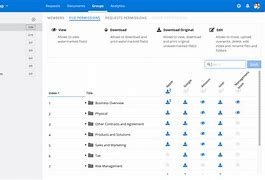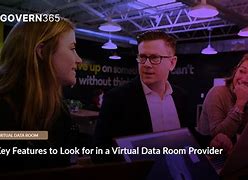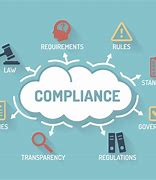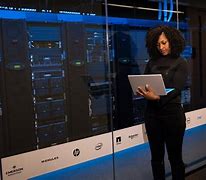
- Virtual Data Rooms: Your Guide to Effective Document Sharing
- What is a Virtual Data Room?
- The benefits of Using a Virtual Data Room
- When Should You Use a Virtual Data Room?
- Key attributes of a Virtual Data Room
- Choosing the Right Virtual Data Room offerr
- How to Use a Virtual Data Room Effectively
- optimal Practices for Virtual Data Room Management
- Virtual Data Rooms: The Future of Document Sharing
- Conclusion

Virtual data rooms (VDRs) have revolutionized the way businesses share sensitive documents, particularly during mergers & acquisitions (M&A), due diligence, and other critical transactions. They provide a secure, centralized platform for managing & accessing important information, ensuring efficiency, confidentiality, & control throughout the entire process.
Think of a VDR as a digital vault where you can store, share, & track your most sensitive data, ensuring it remains safe & accessible only to authorized individuals. Imagine the frustration of juggling multiple emails, folders, & file-sharing platforms during a complex deal – with a VDR, you can easily streamline the process & avoid these headaches.
But VDRs offer much more than just secure document storage. With features like advanced security protocols, granular permissions, & detailed audit trails, VDRs allow you to take complete control over your information. You can determine who has access to what information & track every action taken within the platform, giving you complete peace of mind during your most important deals.
A VDR isn’t just for large corporations & major transactions – businesses of all sizes & deal types can benefit from its capabilities. From sharing confidential documents with potential investors to streamlining contract negotiations, VDRs can be adapted to meet the unique needs of each organization.
This article will guide you through the fundamentals of virtual data rooms, explore their key features, & provide insights into how they can be effectively used for various business objectives.
Virtual Data Rooms: Your Guide to Effective Document Sharing
In the modern business landscape, where collaboration, security, and efficiency are paramount, virtual data rooms (VDRs) have emerged as a game-changer for document sharing. VDRs offer a secure, centralized platform for storing, managing, and sharing sensitive information, transforming the way businesses conduct due diligence, mergers and acquisitions (M&A), and other critical processes.
What is a Virtual Data Room?
A virtual data room, also known as a secure online data room, is a cloud-based platform designed to facilitate secure document sharing and collaboration. It acts as a digital vault for sensitive documents, offering robust security attributes, granular access control, and advanced collaboration tools. VDRs enable businesses to share confidential information with external parties, such as investors, potential buyers, or legal teams, while maintaining complete control over access and visibility.
The benefits of Using a Virtual Data Room
VDRs offer a wide scope of benefits that can significantly enhance document sharing processes and streamline business operations. Here are some key benefits:
Secure Document Storage and Access Control
VDRs offer a highly secure environment for storing and managing sensitive documents. Robust security measures, such as encryption, multi-factor authentication, and access logs, ensure that only authorized individuals can access the information. Granular access control allows administrators to define specific permissions for each user, preventing unauthorized access and ensuring data integrity.
Enhanced Collaboration and Communication
VDRs foster seamless collaboration by enabling users to share, annotate, and discuss documents in real-time. Built-in communication tools, such as chat and forums, facilitate efficient communication and collaboration among team members, external stakeholders, and legal counsel.
Streamlined Due Diligence Process
During mergers and acquisitions, due diligence is a crucial process that involves examining a company’s financial records, contracts, and other pertinent documents. VDRs streamline this process by providing a centralized repository for all necessary documentation. This allows potential buyers to access information quickly and efficiently, facilitating a smooth and transparent due diligence process.
Improved Efficiency and Productivity
By automating tasks such as document management, access control, and communication, VDRs significantly improve efficiency and productivity. Users can access and share documents from anywhere with an internet connection, eliminating the need for physical document storage and transportation.
Reduced Costs and Paperwork
VDRs eliminate the need for physical document storage, reducing costs associated with printing, photocopying, and shipping. They also minimize the risk of document loss or damage, ensuring that sensitive information remains secure and easily accessible.
When Should You Use a Virtual Data Room?
VDRs are valuable tools for various business situations, including:
Due Diligence During Mergers and Acquisitions (M&A)
VDRs are essential for managing due diligence processes during M&A transactions. They offer a secure and efficient platform for sharing financial statements, contracts, intellectual property records, and other sensitive documents with potential buyers or sellers.
Fundraising and Investor Relations
VDRs facilitate secure and transparent communication with investors during fundraising rounds. They allow companies to share confidential information, such as business plans, financial projections, and due diligence materials, while maintaining complete control over access and confidentiality.
Legal and Regulatory Compliance
VDRs are used to manage and share documents related to legal proceedings, regulatory audits, and compliance requirements. They offer a secure platform for storing and sharing sensitive information, such as legal contracts, compliance reports, and internal investigation documents.
Intellectual Property Management
VDRs are valuable for managing intellectual property portfolios. They offer a secure platform for storing and sharing patents, trademarks, copyrights, and other intellectual property assets, ensuring that these valuable assets are protected and easily accessible.
Real Estate Transactions
VDRs are commonly used in real estate transactions to share property documentation, such as title searches, surveys, and environmental reports. They ensure secure and efficient communication between buyers, sellers, and legal counsel during complex real estate transactions.
Key attributes of a Virtual Data Room
VDRs offer a scope of advanced attributes designed to enhance document sharing and collaboration:
Secure Access Control and User Management
VDRs offer granular access control, allowing administrators to define specific permissions for each user. This ensures that only authorized individuals can view, edit, or download specific documents. Robust user management attributes allow administrators to create user accounts, assign functions, and track user activity.
Version Control and Audit Trails
VDRs automatically track all document changes, providing a complete audit trail of all activity. This ensures that all versions of documents are securely stored and easily accessible, allowing users to revert to previous versions if needed.
Document Sharing and Collaboration Tools
VDRs offer a variety of tools for sharing and collaborating on documents. Users can share documents, annotate them with comments, and track changes in real-time. These attributes facilitate efficient communication and collaboration among teams, external parties, and legal counsel.
E-Signatures and Approval Processes
VDRs integrate with electronic signature solutions, allowing users to electronically sign documents and obtain approvals online. This streamlines workflows, eliminates the need for physical signatures, and ensures the legal validity of signed documents.
Advanced Search and Filtering Capabilities
VDRs offer powerful search and filtering capabilities, enabling users to quickly find specific documents based on search terms, metadata, or other criteria. This makes it easy to locate and retrieve pertinent documents efficiently.
Choosing the Right Virtual Data Room offerr
selecting the right VDR offerr is crucial for ensuring security, functionality, and compliance. Consider these factors when evaluating varied offerrs:
Security and Compliance
Prioritize offerrs that offer robust security attributes, such as encryption, multi-factor authentication, and access logs. Ensure that the offerr complies with pertinent industry standards and regulations, such as HIPAA, GDPR, or SOC 2.
User Interface and attributes
select a VDR with a user-friendly interface that is intuitive and easy to navigate. Look for offerrs that offer a thorough set of attributes, such as granular access control, version control, advanced search capabilities, and robust collaboration tools.
Pricing and Support
Consider the pricing model and ensure it aligns with your budget. Evaluate the level of support offered by the offerr, including customer service availability, training materials, and technical assistance.
Integrations and Compatibility
Ensure that the VDR integrates seamlessly with your existing systems and applications. Look for offerrs that offer integrations with popular productivity tools, such as Microsoft Office, Google Workspace, and Dropbox.
How to Use a Virtual Data Room Effectively
To maximize the benefits of VDRs, follow these optimal practices:
Preparing Your Documents for the Virtual Data Room
Organize your documents into logical folders and subfolders, using a clear and consistent naming convention. This will make it easier for users to find and access the information they need.
Setting Up Access Permissions and User functions
Define specific access permissions for each user, ensuring that only authorized individuals can view, edit, or download specific documents. Create user functions to streamline access control and simplify user management.
Managing Document Access and Security
Regularly review access permissions and ensure that they are up-to-date. Implement security measures, such as encryption, multi-factor authentication, and access logs, to protect sensitive information.
Tracking and Reporting on Activity
Track user activity within the VDR, including document views, downloads, and changes. Use these reports to monitor security, determine potential issues, and maximize your workflow.
Using Virtual Data Room attributes to maximize Your Workflow
Utilize the advanced attributes of the VDR, such as e-signatures, annotation tools, and communication attributes, to streamline workflows and improve collaboration.
optimal Practices for Virtual Data Room Management
Establish Clear Communication and Collaboration Protocols
Develop clear communication protocols for all users, outlining how to access documents, share feedback, and resolve issues. Encourage frequent communication to ensure that everyone is on the same page.
Train Users on Virtual Data Room attributes and functionality
offer thorough training for all users, covering the attributes and functionality of the VDR. This will ensure that everyone is comfortable using the platform and can leverage its full potential.
Monitor Activity and Ensure Security
Regularly monitor activity within the VDR to determine potential security breaches or unauthorized access. Implement security measures and optimal practices to protect sensitive information.
Regularly Review and Update Your Virtual Data Room plan
Evaluate the efficacy of your VDR plan on a regular basis and make necessary adjustments. Consider new attributes, emerging technologies, and evolving security requirements to ensure that your VDR remains secure, efficient, and effective.
Virtual Data Rooms: The Future of Document Sharing
VDRs are rapidly becoming the standard for secure document sharing, transforming the way businesses collaborate and manage sensitive information. As technology continues to evolve, we can expect to see:
boostd Adoption and Integration
VDRs are becoming increasingly prevalent across various industries, with businesses of all sizes recognizing their value. Integration with other enterprise applications and platforms will further enhance the efficiency and usability of VDRs.
Emerging Technologies and Innovations
The future of VDRs holds exciting opportunities for innovation. Emerging technologies, such as artificial intelligence, machine learning, and blockchain, will further enhance security, automation, and user experience.
The Importance of Data Security and Privacy
As the volume and sensitivity of data boost, data security and privacy will become even more critical. VDR offerrs will continue to invest in robust security measures and compliance frameworks to ensure that sensitive information remains protected.
Conclusion
Virtual data rooms offer a secure, efficient, and collaborative platform for managing sensitive information. By adopting VDRs and adhering to optimal practices, businesses can streamline document sharing, enhance collaboration, and protect critical data. As technology continues to evolve, VDRs are poised to play an even more central function in modern business operations.




























